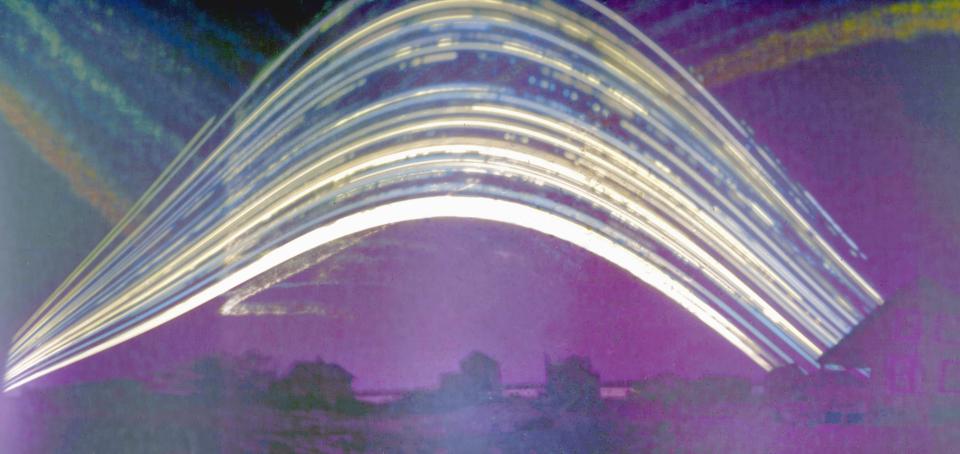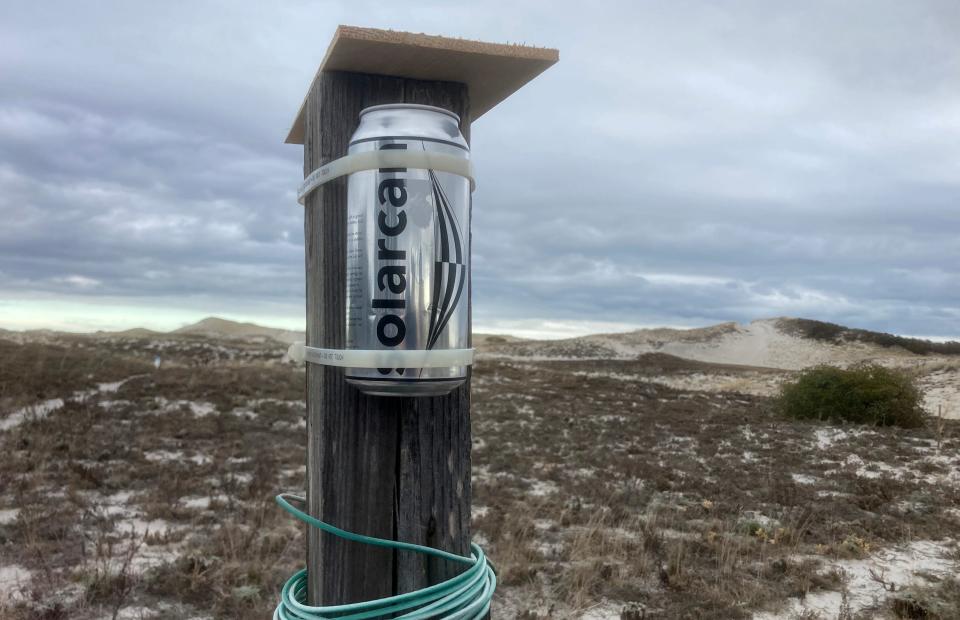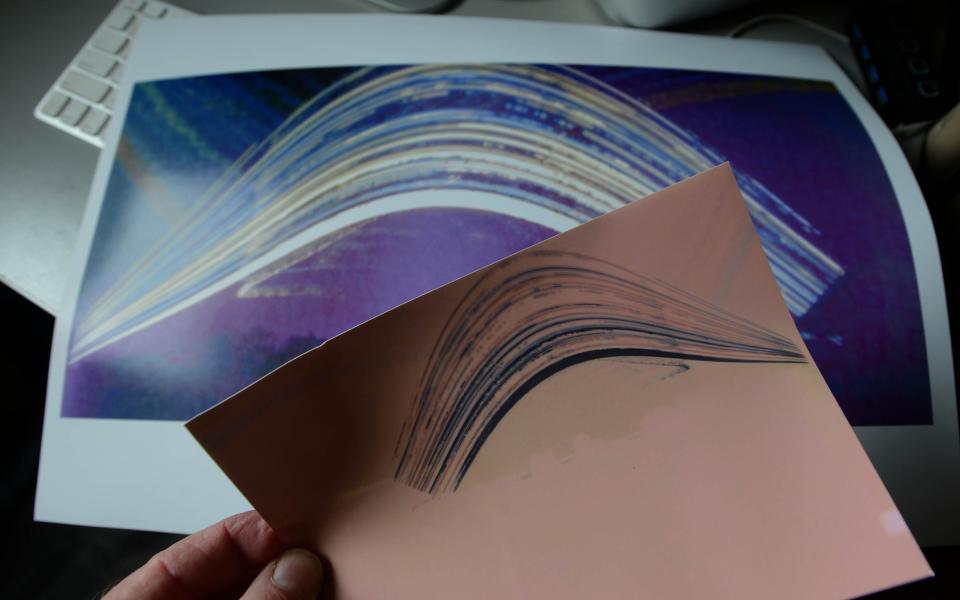A tin can took this photo over the course of four months. Here's how that works.
So, what exactly is this week’s photograph?
Here’s the explanation. Last year a neighbor gifted a pair of cameras. They were shiny and new, complete in original packaging. They were not a combo pack of digital cameras, but a new twist on something very old in photography, pinhole cameras. Writings back to 300 BCE describe the simple optical phenomenon of a tiny hole acting as a lens and projecting an upside down and backwards image onto a wall behind it, later called a camera obscura.
It is the simplest method of making a photograph. No lens, just a tiny hole projecting light onto a sensitized piece of film or paper. The camera field of view is 160 degrees. The pair of “cameras” I received were 16-ounce soda cans, complete with pull tab tops. Inside, wrapped around the circumference was a 5x7-inch sheet of sensitized photo paper for making color prints, sold under the brand name of Solar Can, invented by Sam Cornwell in the United Kingdom.

More:Photo Shoot: Musical moments
My installation of camera #1 was in a protected spot under the porch, looking out at Barnstable Harbor. Installation was easy: attach a pair of long plastic zip ties at top and bottom of the can, remove the black tape over the pinhole, and wait - a really long time.
The first camera was up from July through August. The result was unimpressive, back to the drawing board. After some online research, typing pinhole camera into Instagram, I was ready for camera #2.

Timing is indeed everything in photography and I needed a low sun angle for this project. So the camera was mounted out in the open, on a neighbor’s clothesline post, about 6 foot high. The exposure started on Nov. 27, 2022 and ran through the last day of winter March 19, 2023, 113 days.
This time the low winter sun streamed across the south-facing horizon, first sinking lower until the winter solstice, on Dec. 21, and then rising towards the vernal equinox.
My biggest fear was someone pulling it off to see what it was. The connecting ties had wording: “Science experiment, do not disturb.” A lesser concern: a well-placed turd bomb from a passing seagull could have covered the pinhole, ending the project.

The can top was removed last week and a negative image of the sun trails was revealed. A flatbed scan of the paper negative and then the magic of photo software, turning the negative image into a positive. Shadowy images of the nearby cottages can be seen. As the camera faced due south, sunrise is represented at left, sunset at right, partially clipped by the roof of a cottage.
Singer Jim Croce’s song from 1973 talked about “saving time in a bottle.” The low-tech pinhole camera succeeded in capturing 113 days inside a tin can, a true photographic miracle.
This article originally appeared on Cape Cod Times: Solar Can photographs winter at Sandy Neck with camera obscura tech

